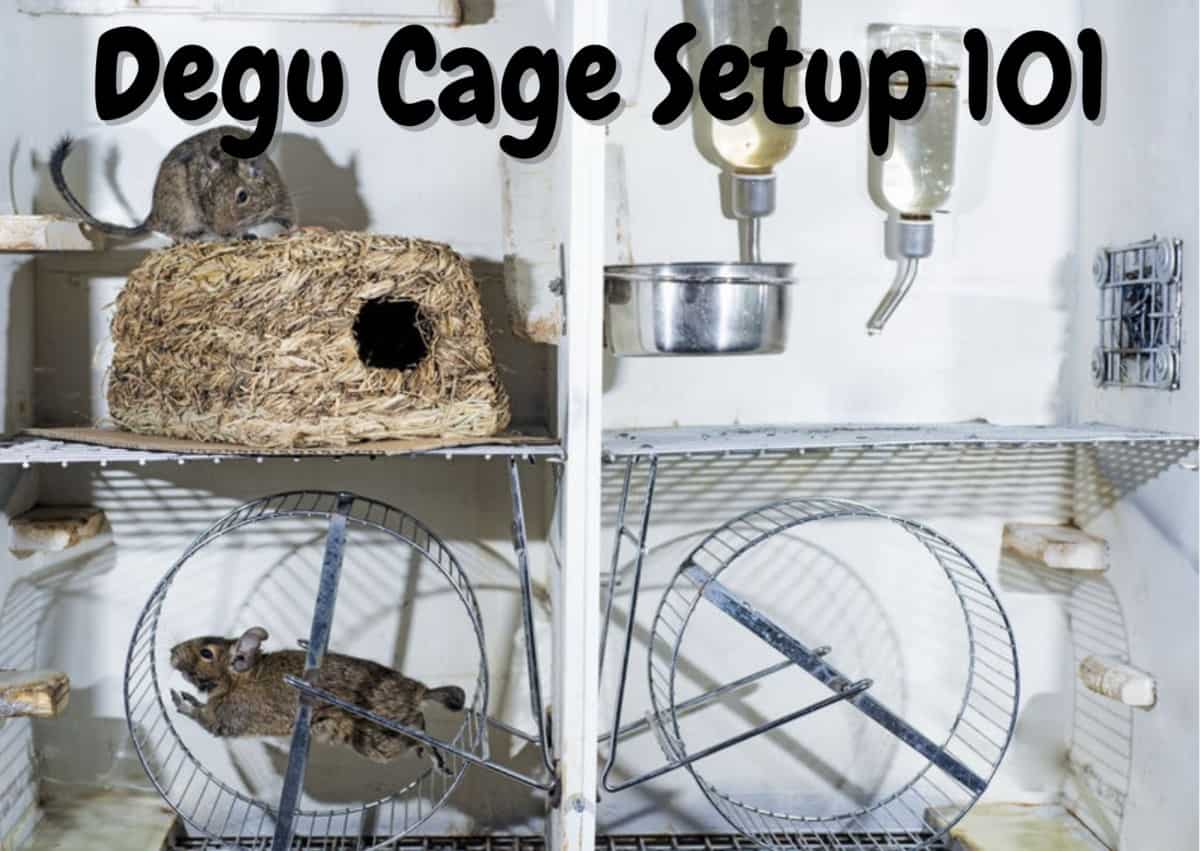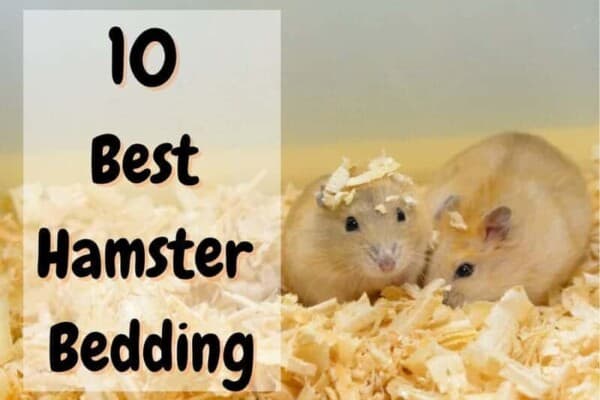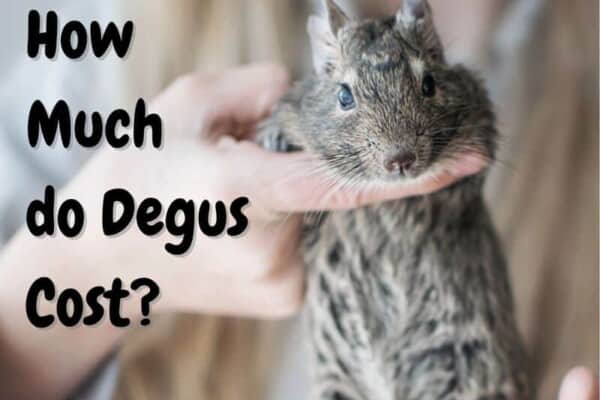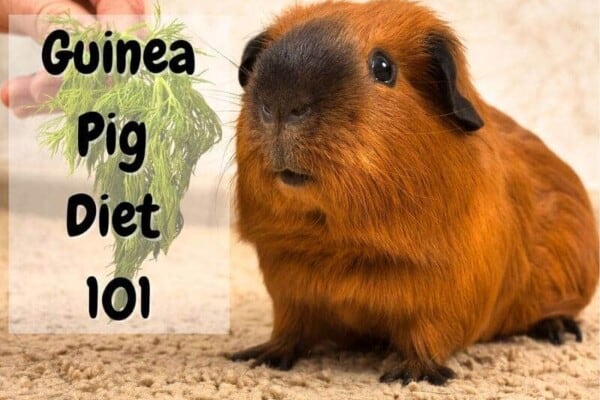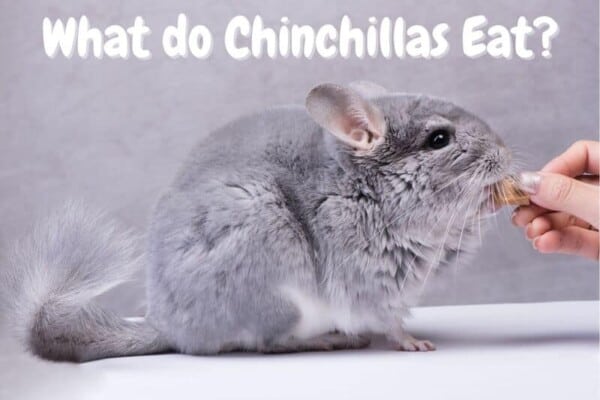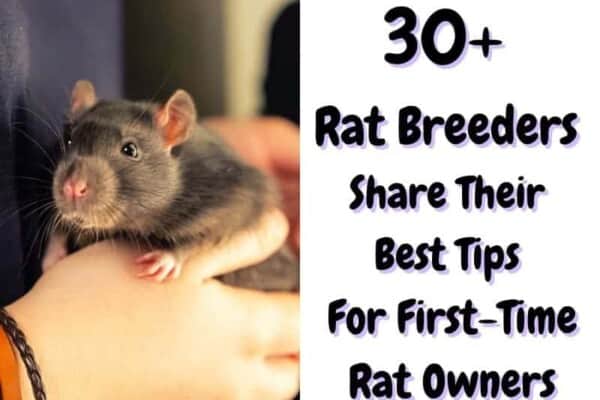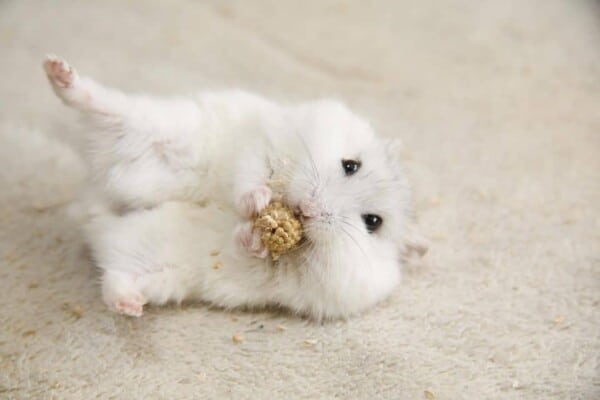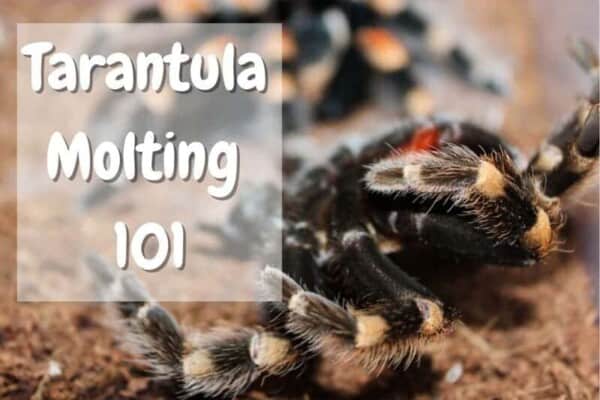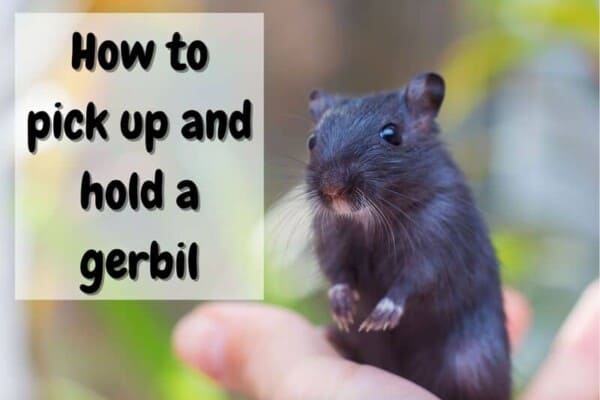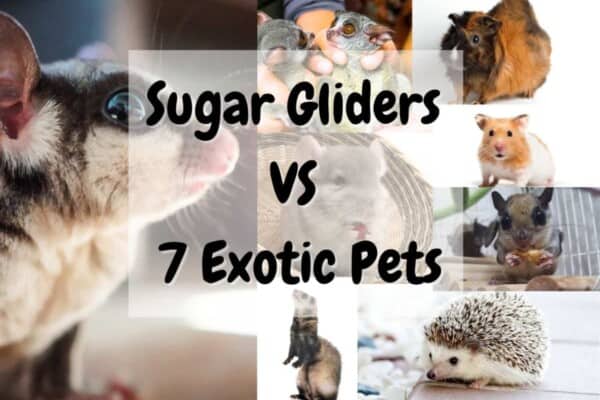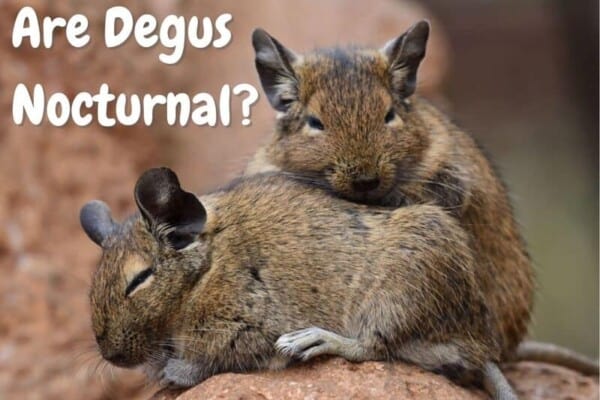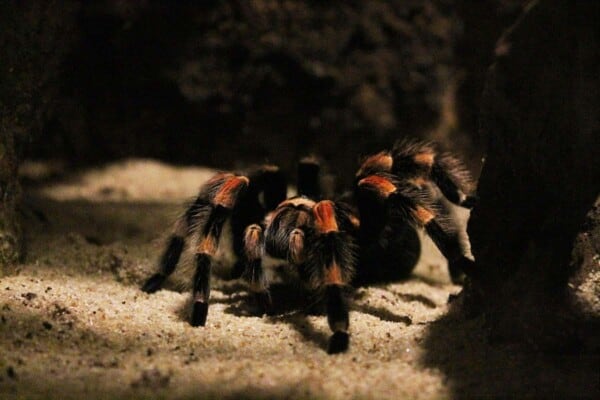Keeping degus means you need to have more than enough space for them to move around. They are energetic rodents and need room to run and roam around. Even if you have just a pair in a habitat, the cage size needs to be appropriate size according to two degus.
The minimum cage size for a pair of degus should be a tall birdcage-style habitat 24″ wide, and 35-40″ long, and 60″ tall with several levels and platforms. If you have more degus, the cage will need to be larger according to the number of degus you add.
Cage size for more than two degus
There is a mathematical rule to how much space you give for housing degus. Starting with 2-3 degus, you will want 18,000 square centimeters. For each degu after this, you need to add 4000 square centimeters. Adding an additional degu means you need 4 square feet added onto a current cage.
You can also consider getting more than one cage. This is especially important if you have territorial issues and need to isolate certain degus. Or if you want to keep the females separate from the males, this is advised for keeping your community population from growing exponentially. The use of separate cages also reduces the amount of cleaning of a larger cage in this case.
Bar spacing
Since degus are rather small, they need a cage that is cross-hatched rather than one with bars. The spacing needs to be no more than 0.8 inches (2 centimeters) between each cross-hatch to keep degus safe. If this spacing is any larger, younger degus could squeeze through and escape. Even where separate levels are used, the flooring needs to be covered so they can walk on these surfaces without the danger of slipping through.
Separate levels and platforms
Degus like to roam and explore in their habitat so it will be necessary to have two or three levels inside the cage itself. As long as the ramps or ladders that lead to separate levels are not too steep, your degus will be safe. Platforms need to be covered with wood that has grooved grips for a degu to climb up to each level. Platforms should be completely sealed off so a degu cannot fall off.
Materials used
A good cage needs to be made from metal with very little plastic involved. You don’t want degus chewing on any plastic since they will if they have the chance. If there is wood inside their cage, it needs to be kiln-dried and edible for degus to chew on.
Obviously, you will want to add items inside that will be more appealing to chew, but your cage should not be one of them. Only buy chewable items that are safe for degus.
What type of bedding should I use?
Degus need bedding that is low in dust since they are sensitive to dusty bedding materials. Now, you can use wood shavings like aspen but avoid cedar and pine. Keep in mind that pine should be kiln-dried. There is also a better alternative that uses recycled paper materials. You can also consider various hay and straw that will be great for degus to enjoy munching on throughout the day.
If you can find good bedding that your degus like and are easy to clean, that should be your choice. Try to find large bulk bags that you can buy when it’s on sale. This way you save more on bedding costs over a year.
Accessories you should put inside your degu cage
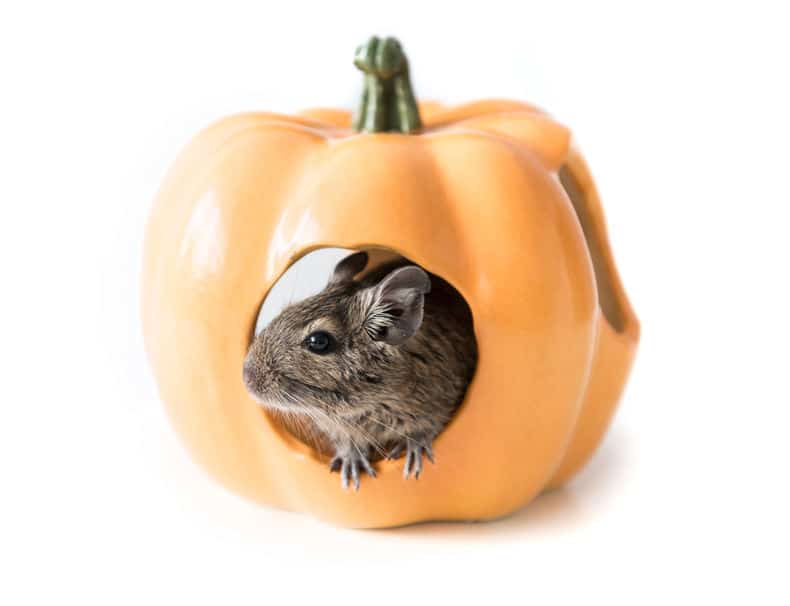
1. Hideouts
Degus like hideouts and they will make use of them for hiding, sleeping, and safety. They need to be constructed from wood that is edible for them. Even hideouts weaved from Timothy hay are good since your degus will likely enjoy gnawing on it. Structures made from ceramic are good bets, and even fleece hideouts are safer for them.
2. Food bowls
To enhance your degu’s diet, any food bowls that you add to a degu cage need to be made from ceramic, metal, or even wood. Plastic food trays are hazards for degus since they want to chew them. If you have more than a couple of degus, you are better off having more than one food dish so each degu will get an equal portion.
3. Water dispenser and water bottle
The best water bottle you want to invest in should be made from glass and not plastic. These bottles also need to hang outside the cage with a metal tube feeder valve inside their cage. You might consider adding a second water bottle if there are more degus in your habitat. Be careful to clean water valves so they aren’t dripping and are free from the food inside the tap.
4. Dust bowl
Degus do like to have a sand bath at least twice a week to help keep their fur free from debris and softer. You can put a dust bowl into their habitat, but it’s better if you’ve trained them to come out of their cage to enjoy these baths at scheduled times during the week.
5. Blanket and fleece
Fleece is a material that is least threatening for a degu. Some degu owners will choose hideouts and hanging hammocks, however, they can become smelly if your degu decides to mark them. There is also the chance they will pee on these fleece materials so they will need weekly washing.
6. Hammock
Degus will sleep mainly at night and will take naps during the day. Hammocks are a good option as these space-saving nesting areas can be clipped under any platform. You will notice that several degus will pile into a hammock to rest together. If you are worried about your degu chewing on the fleece, you should look for Timothy hay hammocks that are woven. Even if they chew on these, it will be healthier for them in the long run.
What type of toys is good for degus?
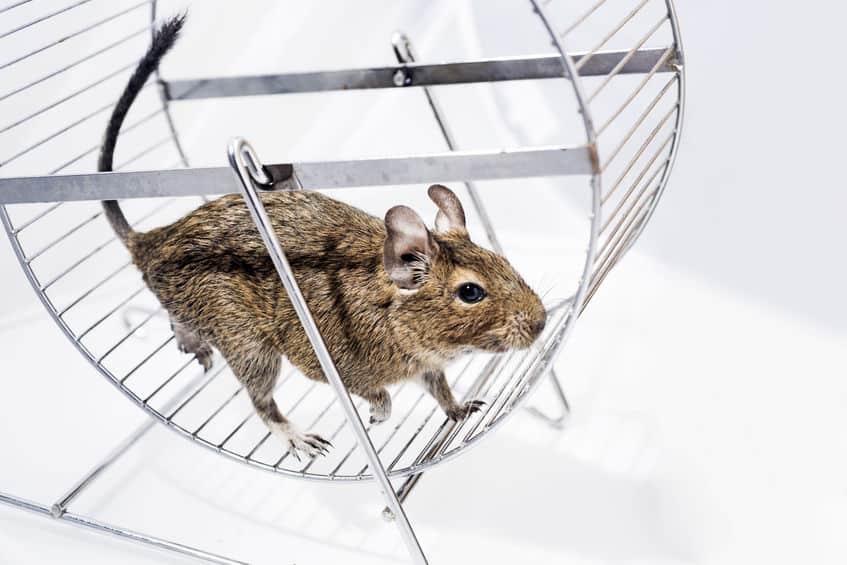
Exercise wheel
Like so many small pets, degus enjoy exercise wheels so when you buy one, make sure it is not made of plastic. A good alternative to plastic is buying a wooden wheel or one that is made from all-metal construction. Perhaps a combination of wood and metal will be just as good if you can find a good deal at your local pet store or from an online pet supply shop.
Do not invest in the type of wheel that is usually called a treadmill. These are angled wheels that offer no protection if they run too fast and fly off the wheel. They could get hurt inside the cage by landing on habitat toys the wrong way. Any exercise wheel needs to be a spinning wheel just like a car wheel. As long as they’re running on the footpath, they won’t fall out so easily.
Chewing toys
Degus love to chew on anything you put in their habitat and that means you need to give them wood that is safe for them. These can include chewing sticks, cardboard, hay, and natural wood toys. The cheapest is always going to be cardboard toilet paper tubes which you will have in your home already. Wood snacks like Applewood, hazelwood, coconut shell, and bamboo are good choices.
Where should I place the cage in the house?
You can put your degus in a place where the noise has the least amount of distraction. If you keep them in your room, expect they will be noisy at night when they wake up to eat and exercise for a while.
Degu cages can get pretty big if you have a whole community added, so you need plenty of room to house them. A large cage can easily take up space where a storage cabinet would go. Smaller habitats are often the size of a mini fridge-sized birdcage.
How about temperature and humidity?
You have to give degus enough airflow and air circulation but when it comes to temperature, it should be constant. The best temperature is 70 degrees Fahrenheit but they can be content with temperatures fluctuating between 59-77 degrees Fahrenheit. The humidity should be 50% but nothing above 60%.
How often should I take my degu out of their cage?
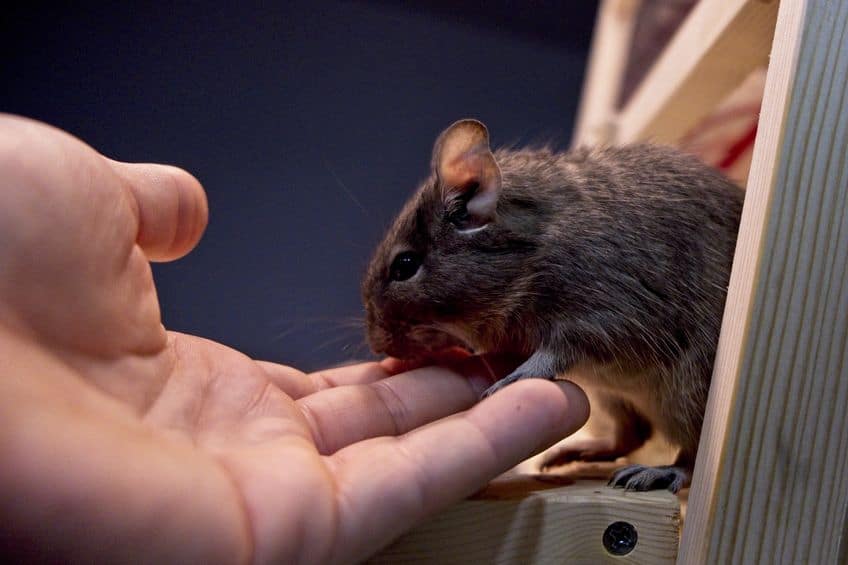
The rule is that you can handle them as much as you’ve trained them to be out of their cage. There will be days they might be not up for certain activities so don’t press the issue if they aren’t being cooperative. If you’ve already started scheduled times for doing tricks or feeding times, your degus will expect them every day. This includes sand baths and handling times.
If you don’t give them their scheduled out-of-the-cage time, they will be harder to keep tame. Not that they won’t forget, but they’ve bonded with you, and that plays a big part in their life. If you’ve taken the time to bond with them and gain their trust, the amount of time you handle them needs to happen as often as you have already built up.
How often do I need to clean my degu cage?
Degus cages need a good cleaning every week for basic spot checks. Every month is a must to remove all the bedding so it doesn’t start smelling. Degu urine does smell like rat urine, so it will get musky after a couple of weeks. It won’t hurt if you clean your cage every two weeks if you want to avoid any kinds of smells. The more absorbent the bedding is, the better it will be for absorbing urine.
Degu poop is referred to as Coprophagy and is important to degus and their metabolism. It won’t be uncommon that they’ll eat their poop to get double the nutrition in their diet. Even if you feed them a well-balanced diet, they will still go back to their poop as a snack since it contains richer short-chain fatty acids than their pellet food.
Should I cover my degu cage?
Just like guinea pigs and chinchillas, you shouldn’t cover your degu’s cage for any reason. Sure they become active at night making noises. Even if you live in a climate that is colder than usual, the best approach is to add a heating pad underneath the cage. The reason is that degus will burrow to keep warm and a heated floor will be good if room temperatures drop below 65 degrees Fahrenheit.
Another reason you don’t want to cover them is to allow for airflow to get into their cage. Air that isn’t moving will cause the temperature to rise in their habitat. It won’t be good for them without adequate fresh air. There is also the ever-present threat they will want to grab and chew on any covering that’s over your cage.
Where can I find some cool degu cage setup ideas?
Some of the best places to find cage setup ideas include Google images and some DIY sites too. I like that Pinterest contains lots of ideas you can download. Since degus are similar to other rodents, their cage ideas often cross over. Save any idea that you find online and put pictures of cage setups so you can construct and customize your own degu habitat.
Read also:
Resources and further reading:
- The Ideal Home for Degus, PDSA UK
- Habitat type influences endocrine stress response in the degu (Octodon degus), Carolyn M.Bauer, Nicholas K.Skaff, Andrew B.Bernard
Contents
- Cage size for more than two degus
- Bar spacing
- Separate levels and platforms
- Materials used
- Accessories you should put inside your degu cage
- What type of toys is good for degus?
- Where should I place the cage in the house?
- How often should I take my degu out of their cage?
- How often do I need to clean my degu cage?
- Should I cover my degu cage?
- Where can I find some cool degu cage setup ideas?

